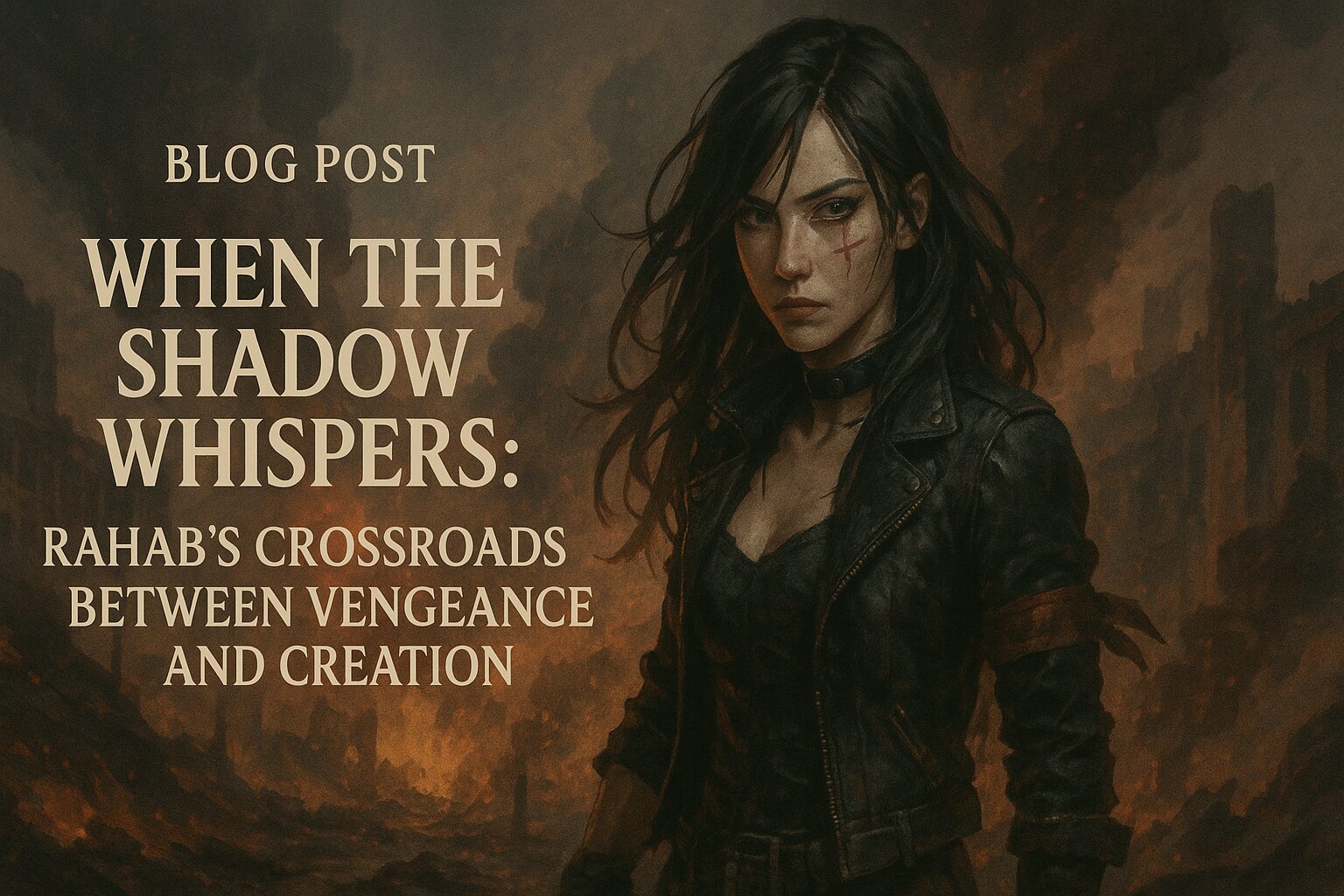“In the silence after the explosion, I heard her. Not the screams. Not my own hate. Just her voice. Telling me to live.”
—Rahab
Rahab was never built to survive peace. Her bones remember war like an old song—every chord a scar, every lyric a name lost to flames. As the lead voice and spirit of the punk collective that once moved underground through ruined cities, she never expected faith to twist into a weapon. And yet, it did.
“The Gray Pledge” isn’t just a track—it’s a eulogy. It’s a dirge disguised as a declaration. It tells the story of a woman shattered by loss, who turns her sacred vows into sharpened fury. She walks through enemy lines not just to destroy but to erase, to carry out what she calls a “Holy Eradication.”
But in the echoing halls of her collapsing sanity, another voice sings: Moka.
Moka is not her conscience. She is more intimate than that—her Shadow, the unseen reflection of her lost innocence, once silenced by trauma. She doesn’t argue against Rahab’s rage. Instead, she offers an alternate path: creation.
“The dead do not beg for revenge. They whisper for rebirth. They want you to outlive them, Rahab.”
This internal war becomes more violent than any battlefield. While Rahab aims her blade at tyrants and ghosts alike, Moka places her hands on the ruins and begins to sculpt.
Moka’s message is simple but revolutionary: creation is the most rebellious act of all. In a world built to recycle suffering, to live with purpose is divine treason.
And so, Rahab hesitates. Mid-mission, mid-murder, she pauses—haunted not by guilt but by grace. Could survival be a greater tribute than sacrifice?
The story doesn’t end in this song. This is merely the threshold.
The answer—what she chooses—is revealed in another track. A continuation. A second life. But for now, “The Gray Pledge” is a portrait of a soul on fire, a heart split between fury and forgiveness.



コメント